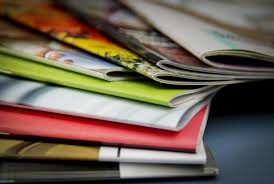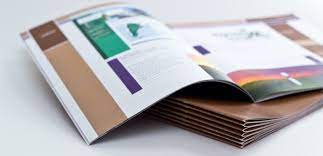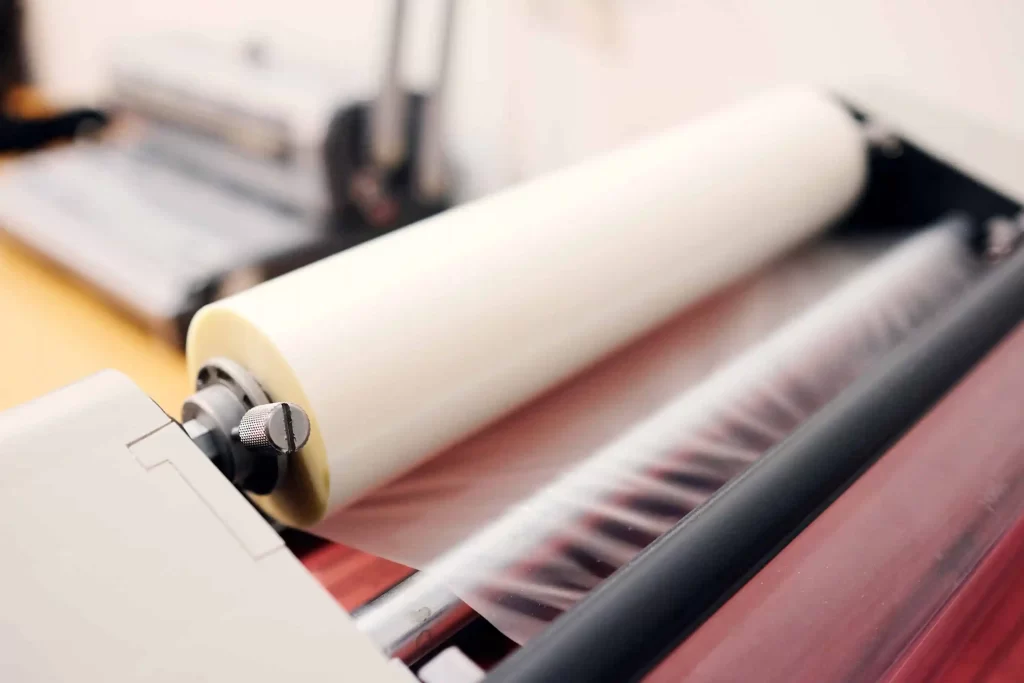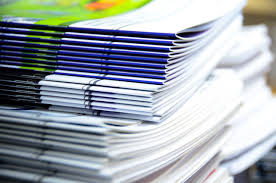
Stapled books, also called saddle-stitched books, are a great choice among various binding methods for smaller projects. This technique folds paper sheets in half and staples them at the spine. It works well for items like magazines, brochures, and reports. The books are easy to open and handle because of their lightweight design. In Australia, MVP Print leads in making top-notch stapled books
What are Stapled Books?
Stapled books, or saddle stitched booklets, are a common and cheap way to bind smaller works among various book binding methods. This method folds paper in half and staples it in the middle. It’s perfect for making small stapled books and stapled booklets like magazines, catalogues, and brochures.
Cost-Effective and Compact Choice
Stapled books, using the saddle stitch binding method, are lightweight and easy on the pocket to make. They suit businesses wishing to print small items without spending much. Compared to other types of bindings, they’re a cheaper option for these uses.
Flexible and Lightweight Binding
Stapled books, which use the saddle stitch method, open flat and are durable. Their lightweight feature offers a hassle-free way for companies to circulate their information.
Easy Distribution and Handling
Because these books are small and light, it’s easy to share or carry them. This makes distributing information smoother for businesses, getting their content to the right people.
How Stapled Books are Printed

MVP Print follows a detailed process to create stapled books. While perfect binding is another popular method, stapled books offer a more cost-effective solution for smaller projects. First off, a thorough 10-point check ensures all design specs are correct. After that, the pages and cover are printed using top-notch machines like the Landa S10P Nanographic Press.
Printing Inner Pages and Cover
The Landa S10P mixes lithographic offset printing with a digital system. For the cover, options like matt or gloss coated paper can be used to add a special touch. It’s perfect for the inside pages. For binding, the Horizon Stitch Liners do the job, turning printed sheets into finished stapled books.
Printing Methods and Machines
Advanced machines at MVP Print, including the Landa S10P and Horizon Stitch Liners, are vital. The Landa S10P uses a digital system, making sure every page is perfectly printed. The Horizon Stitch Liners then bind the books, handling everything from folding to trimming.
Embellishment and Lamination Options
MVP Print gives you more than just prints and bindings. They offer options like embellishment and lamination. These enhance how stapled books look. Their use of advanced tech makes these books look better at a low cost.
Spot UV and Foiling
Using the MGI JETvarnish, MVP Print can add spot UV or foil to a book’s cover. This gives the book a premium and attractive look. It helps the stapled books to appear unique and memorable.
Lamination Types and Benefits

The Autobond Laminators from MVP Print offer various finishes, be it matt or gloss. These not only protect the book’s cover but also adds sophistication and durability. It helps in making the stapled books look and feel high-quality.
With their embellishments and lamination, MVP Print transforms stapled books. They become cost-effective, compact, and appealing. These touches increase the books’ value and how they’re remembered by readers.
Trimming and Binding Process
After printing the inner pages and covers, the books are stapled. Compared to other binding methods, this product offers a straightforward and efficient process. They then go through many steps to make sure they look professional. Each page is cut to the correct size using the Horizon Stitch Liner.
Collating and Stacking Sheets
Next, the trimmed sheets are put in order carefully. This is important for the book to flow well. It’s done before they are folded.
Folding Sheets
Then, the sheets are folded in half to make a stapled book. This is a key step. It makes sure the pages are straight and ready for stitching.
Saddle Stitch Binding with Staples
At the next station, staples join the layers. They are carefully cut to fit the size needed. This stapling method is economical and reliable for books.
Final Trimming and Quality Check
After stitching, the book goes to the Horizon Three Knife Trimmer. It trims the edges for a clean look. Then, the MVP Print team checks each book to ensure it’s perfect
Stapled Books

Stapled books are perfect for small publications like magazines, brochures, and reports. They work well for books with 8 to 76 pages, making it important to consider how many pages your project will have. This makes them a good and cheap choice.
Ideal for Smaller Publications
Stapled books are great for small prints. However, for projects like a landscape booklet, other binding methods might be more suitable due to the larger sheet size required. They are strong, cheap, and easy to carry. Businesses love them for saving money while looking good.
Suitable Page Count Range
Stapled books fit perfectly for 8 to 76 pages. This is great for when you need something small yet impactful.
Durable and Cost-Effective Choice
Choosing stapled books means you get something that lasts, without spending a lot. They’re light and easy to handle. This is why they’re popular for business uses at a good price.
Printing Machines for Stapled Books
At MVP Print, we use top-notch gear to make great stapled books. Choosing the right paper stock is crucial for achieving the desired quality and appearance of the final product. Our main machine is the Landa S10P Nanographic Press. It mixes old-school offset printing’s quality with new digital efficiency.
Landa S10P Nanographic Press
The Landa S10P Nanographic Press marks a new era in printing. It prints vivid, lifelike images using special inks that turn into a tough yet thin film. Its digital setup makes getting started fast, perfect for speedy, top-quality book printing.
Horizon Stitch Liners
For putting the books together, we’ve got Horizon Stitc hLiners. These machines do everything from folding the pages to trimming the final book. They’re key in making sure each book is flawless. Working with our printers, they help us churn out top-notch stapled books for our customers.
Design Tips for Stapled Books

When making a stapled book, think about a few important things. Make sure the content and layout are well organized. This makes the book easy to read and look good.
Content Organization and Layout
How you organize your content matters a lot. Arrange it in a way that flows well for the reader. Use headings and breaks to guide them through your book easily.
Image and Font Selection
Good images and fonts are key for a professional look. Pick images that fit your content well. Choose easy-to-read fonts that match your style. Be sure to use the same font style all the way through.
White Space and Consistency
White space and a consistent design make your book look great. Use white space to keep things clear. Keep your design, colors, and brand the same on every page. This helps your book make a strong impression.
Paper and Cover Stock Options
MVP Print has many paper and cover stock options for stapled books. Square booklets are another option that can make your project stand out with a bold and distinctive look. Customers can choose from coated and uncoated paper. These come in different weights like 80gsm and 157gsm. This lets businesses find the perfect match for their needs.
Coated and Uncoated Paper Varieties
Deciding between coated and uncoated paper is key for a stapled booklet. Coated papers have a glossy or matte finish. They make images pop and add a touch of premium. For a more natural feel, uncoated papers might be best. They work well for publications like brochures.
Cover Stock Weight and Finishes
For the cover of stapled books, choose from 200gsm to 300gsm options. Choose a finishing like high-gloss, matte, or textured. This lets you get the look and durability you want for your books
Conclusion
Stapled books are known as saddle-stitched books. They are cost-effective and versatile. This makes them great for magazines, catalogues, brochures, and reports. They are a top pick for companies in Australia. Why? Because they can print high-quality materials within a budget.
At MVP Print, the team uses the best technology. For example, the Landa S10P Nanographic Press and Horizon Stitch Liners. This ensures your stapled books are top-notch. You also have cool options like spot UV and foiling for a unique finish.
If your publication is shorter, these stapled books are perfect. They work well for items with 60 to 70 pages. Think brochures, catalogues, newsletters, and literary journals. Knowing about stapled books helps Australian businesses pick the right binding for their prints.
FAQ
What is the purpose of stapled books?
Stapled books are great for small publications like magazines and brochures. They’re easy to handle and distribute, making them a smart choice.
What is the typical page count range for stapled books?
These books work well for about 8 to 76 pages. They’re ideal for shorter works, fitting a variety of needs without breaking the bank.
What are the advantages of using stapled binding?
They’re a budget-friendly option that’s easy to carry. Because of this, they’re perfect for magazines and smaller reports.
What is the printing and binding process for stapled books?
The printing process for stapled books is thorough. It includes checking all the details, printing pages and covers, then folding and stitching them together. Finally, each book is trimmed and checked for quality.
What embellishment and lamination options are available for stapled books?
Stapled books can get special treatments like spot UV or foiling. To protect and enhance the cover, you can choose from different lamination finishes.
What type of printing equipment is used to produce stapled books?
MVP Print uses top-notch printing machines. The Landa S10P and Horizon Stitch Liners are used to make sure every book looks its best.
What design considerations are important for stapled books?
When designing these books, think about the layout and images. It’s key to use space well and keep the design consistent for a professional finish.
What paper and cover stock options are available for stapled books?
You can choose from various paper types and weights for inside pages. There’s also a selection of cover stocks, so you can pick what’s best for your project.








